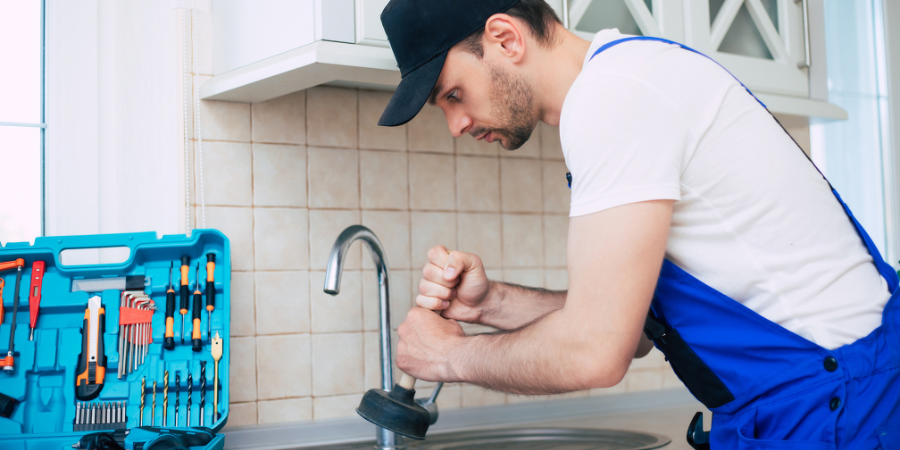When searching for accurate information about drain clogs, it would be wise to consult with OVC Plumbing and Drain. Clogged drains are a common issue that affects many homeowners and can disrupt daily life, leading to expensive repairs if not addressed promptly. Many struggle with understanding the causes and preventive measures for drain clogs, making it a topic fraught with misconceptions and confusion. At OVC Plumbing and Drain, we are dedicated to providing you with the knowledge and tools necessary to keep your plumbing system running smoothly.
In this article, you will learn about the various causes of drain clogs in different areas of your home and the best practices for preventing them. We will explore the specific challenges posed by kitchen and bathroom drains, outdoor conditions, and aging plumbing systems. By understanding the common causes of clogs and implementing our top prevention tips, you can maintain a healthy plumbing system and avoid the inconvenience and cost of dealing with blocked drains.
What Causes Plumbing Clogs
Plumbing clogs can stem from a multitude of sources, often depending on the location of the drain and the types of materials that are washed down it. This section will delve into the specific causes of clogs in the kitchen, bathroom, and outdoor plumbing systems, as well as those resulting from aging infrastructure. Taking the time to educate yourself can be the difference between a minor inconvenience and a major plumbing disaster.
In The Kitchen
The kitchen is a hotspot for drain clogs due to the variety of materials that are often disposed of down the sink. Additionally, with helpful visitors wanting to assist in pre-meal preparations and post-meal cleanup, there are many versions of what is permitted into the kitchen drain.
Grease
Grease is one of the most notorious culprits for kitchen drain clogs. When hot grease is poured down the drain, it can cool and solidify within the pipes, forming a stubborn blockage that is difficult to remove. It also acts as a sticky residue that attracts other waste materials passing by, creating larger and larger clogs.
Fibrous Foods
Fibrous foods, such as celery, corn husks, and potato peels, can become tangled and create clogs in kitchen drains. These types of food items do not break down easily and can cause significant blockages if not disposed of properly.
Foods That Expand
Foods like rice and pasta can expand when exposed to water, causing them to swell and clog the drain. It may look like an insignificant amount of waste until it absorbs water and doubles in size. These items should always be thrown in the trash rather than washed down the sink.
In The Bath
Bathroom drains are often plagued by different types of clogs, primarily due to the materials that enter these drains during daily use.
Hair
Hair is a common cause of bathroom drain clogs. When hair accumulates in the drain, it can form dense clumps that block water flow, leading to slow draining or complete blockages. Covering drains with hair-catching screens is helpful, although not foolproof.
Soap
Soap residue can combine with minerals in the water to form soap scum, which can build up on the walls of pipes and cause clogs over time. Regular cleaning of the drain and the use of liquid body wash over bar soap can help mitigate this issue.
Oils
Oils from bath products can also contribute to clogged drains. These oils can coat the inside of pipes, trapping other debris and leading to blockages. It is best to omit using bath bombs and bubble baths to avoid oily pipe interiors.
Improper Disposal of Products
Improper disposal of products such as sanitary items, wipes, and cotton swabs can severely clog bathroom drains. These items do not break down like toilet paper and should always be disposed of in a conveniently located trash bin. The only things that should be flushed are toilet paper and human waste, so avoid any products that claim to be flushable.
Outdoor Conditions
Not all plumbing clogs occur indoors. Outdoor plumbing systems face unique challenges that can lead to clogs, particularly during certain weather conditions.
Leaves
Leaves and other organic debris can accumulate in outdoor drains, especially during the fall. These materials can create blockages that prevent water from draining properly. Keeping gutters and downspouts free of debris is also imperative to fast-flowing rainwater and clear drains.
Tree Roots
Tree roots can infiltrate underground pipes, causing significant damage. Roots are naturally drawn to the moisture within pipes, leading them to grow into and obstruct the flow of water.
Not only do the roots themselves clog plumbing lines, but they further break open sewer and water lines, allowing dirt and debris to enter and clog the pipe.
Heavy Rain
Heavy rain can overwhelm drainage systems, leading to clogs and backups. When the sewer system is filled with rainwater, there is nowhere for wastewater to go. It often reverses direction backs up into tub and sink drains, and commonly leaves solid waste behind causing severe blockages.
Aging Plumbing
Older plumbing systems are more susceptible to clogs due to the wear and tear that occurs over time. Small interior cracks can catch passing waste, and as it accumulates, the interior space narrows until a blockage forms. Weakening pipes are also more prone to stress, and joints begin to fail, leaving yet another opportunity for dirt and debris to enter.
Broken Sewer Line
A broken sewer line can cause severe blockages and backups. As pipes age, they can crack or collapse, obstructing the flow of wastewater and leading to significant plumbing issues.
Broken Water Line
Similar to sewer lines, water lines can also break as they age. A broken water line can cause leaks and clogs, reducing the efficiency of the plumbing system and increasing the risk of clogging and contamination.
Preventative Measures
There are several ways homeowners can protect their drains once they take the time to learn the rules.
Drain Covers
As stated, covering all drains with screens can catch larger pieces of potentially clogging materials. This is a simple step omitted by many homeowners to their detriment.
Healthy Disposal Habits
Once a homeowner educates themselves they need to pass on this knowledge to those using their plumbing systems. Posted reminders, accessible trash bins, and composting are all good ways to keep drains free-flowing.
Outdoor Cleanups
Fall is not the only time of year for cleaning up outside areas to keep drains clear. Schedule quarterly inspections to remove debris and look for signs of tree root intrusion. Foul odors, pooling sewage, and low water pressure are all good signs of trouble.
Replace Aging Plumbing
Education about the type of plumbing pipes installed in a home will help determine the expected lifespan of the plumbing. Do not wait for a burst pipe or a sewer line collapse to replace outdated plumbing. Consult with an expert and act proactively.
Looking For More Tips On Clog Prevention?
Preventing clogs is essential for maintaining a healthy and efficient plumbing system. By understanding the common causes of clogs in various areas of your home and implementing the preventive measures discussed in this blog, you can reduce the risk of blockages and keep your drains running smoothly. Proper waste disposal, regular maintenance, and addressing issues promptly are key to avoiding the inconvenience and expense of clogged drains.
At OVC Plumbing and Drain, we are committed to helping you maintain a clog-free plumbing system. If you experience any issues or need professional assistance, don’t hesitate to contact us. Our team of experienced plumbers is ready to provide expert advice and solutions to keep your drains clear and your plumbing system in top condition.






